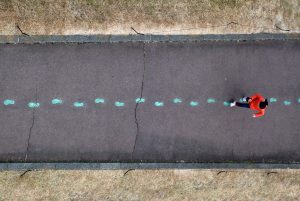Wow. On Tuesday, January 28th, the Pacific School of Inquiry and Innovation provided our cohort with a concrete example of inquiry-based, personalized learning.
The Pacific School of Inquiry and Innovation is a highschool that allows it’s students to “develop interdisciplinary pathways leading to learning activities that take them through a curriculum all their own, while also meeting or exceeding BC graduation requirements.” The school’s founder and principal, Jeff Hopkins, gave us a fascinating presentation on why he created this school and how it operates. He then answered many of our questions that arose after the thought-provoking lecture.
Hopkins explained how the school does not have set blocks during the day, classes split by grades, mandatory classes, or even homework. Learners go through an inquiry process to find a couple of topics each year that interest them. These topics can apply to many different subjects in the BC curriculum. They could also apply to optional “sessions” run by the teachers. For example, on Tuesday I saw a chemistry session on atomic orbitals. The school has a “collaborative space,” a science lab, multiple meeting/session rooms, a sensory room, a drama space, an art space, a shop space and much more that I didn’t get to explore fully. All of this inquiry-based learning takes place in an office building in downtown Victoria.
It was very exciting to see a school that encompasses pretty much all of the values that we have been taught to channel in our future classrooms. These values, thoughts, and ideologies include inquiry-based learning, personalized learning, flexible seating, collaborative learning, self-determination theory, the Circle of Courage, the Three A’s of Motivation, and multiage classes. Despite how interesting it was to see these models put in practice, this inquiry school does have some downfalls that may be tricky to implement successfully both in an elementary school setting and in general:
- Self-determination: some people who have attended “regular” school may not be used to having full control, autonomy and responsibility for their learning.
- Grade-oriented learning: students from “regular” schools are used to learning something to get a good grade. Oftentimes after they receive that grade, they forget what they have learned. Students are not used to the idea of mastering a subject for the sake of learning.
- Collaboration and Cooperation: although these learning ideas are emphasized throughout the new BC curriculum, students have been trained to be individualistic learners in competitive learning structures. Having to switch over to a cooperative and collaborative learning style may feel uncomfortable for some students.
- Specifically for primary years, having the drive, passion, and diligence to be autonomous over their own learning would be a big challenge. At this age, learners need guidance and routine to learn how to learn.
Despite some challenges that self-directed, inquiry-based learning may bring, I believe it is a very valuable education style that should be implemented into every classroom at every grade level: it is up to the teacher to understand their learners and know the ways in which to do so.



